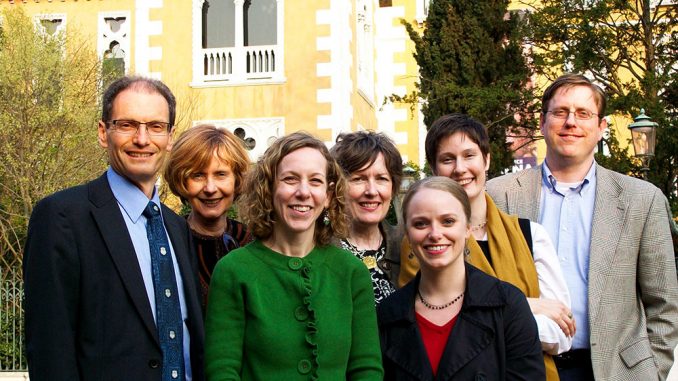
Despite art history professor Marcia Hall’s deep interest in the art of the Counter-Reformation since receiving her Ph.D. at Harvard in 1967, she took time away from the subject after completing her degree to explore other areas of the art world. This year, however, she has returned to the subject matter.
She and fellow art history professor Tracy Cooper published a collaborative book, “The Sensuous in the Counter-Reformation Church,” published by Cambridge University Press.
“[Cooper] and I had organized a pair of sessions at an annual meeting of Renaissance,” Hall said. “On the plane back to Philadelphia we recognized that there was a thread running through a number of papers relating to the senses, and we decided it was a topic whose time had come.”
Hall says that at the Renaissance conferences, one of the first points of discussion was the idea that during the Counter-Reformation, progress in art is believed, by some, to have been halted by the church’s desire to produce more sacred pieces.
However, she takes a different point of view on her area of expertise.
“I argued that on the contrary, some of the most important painters of the late 16th century – Titian, Tintoretto, Barocci, El Greco, Caravaggio – actually created a new kind of sacred image,” Hall said. “[These images] answered the demands both of the Church for devotional images and of the patrons for work of art.”
This is not the first time Hall has delved into the role art has played in Renaissance churches.
Ten years after earning her Ph.D., she published her dissertation into her first book, entitled “Renovation and Counter-Reformation.” In 2011, she published “The Sacred Image in the Age of Art,” which explored topics similar to the theme of this new book.
Hall said that at the forefront of her argument for the progress made in art during the Counter-Reformation is based on the feelings artists were able to evoke in the viewer.
“Key to [the artist’s] new contribution was an appeal to the emotions and the senses of the beholder,” Hall said.
While she has written a large number of books over the course of her career, Hall said having a partner throughout the process is unique for her.
“This is the first time I have collaborated on editing a text,” she said. “It was stimulating to discuss the essays together with [Cooper] in the editing process.”
Hall and Cooper’s goal is to show how important early Renaissance work was for the arts community and disproving a popularly believed theory that the religiousness of the time period stifled artistic expression.
Through closely analyzing the role the senses play in experiencing works of art, Hall said many of these Counter-Reformation artists were able to forge a new path.
Alexa Bricker can be reached at abricke1@temple.edu.



Be the first to comment